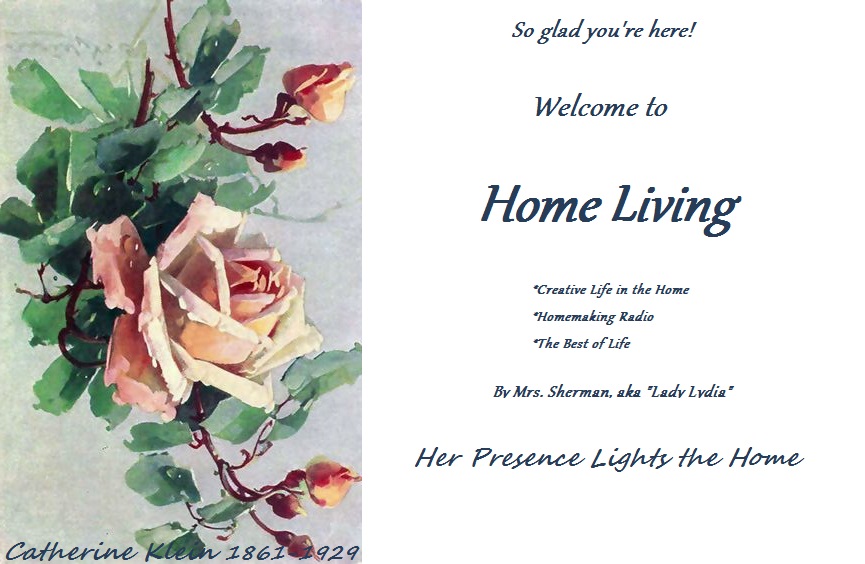Summer Shade from the Miramax Movie Emma
from Soft Surroundings catalog
A place between two lilac trees makes a good spot for a day time tent.
Continuing from a previous lesson about the importance of young women creating their own quiet places, here is something that is uncomplicated to make, requiring no special tools or expertise. This is a tent made with sheets and clothespins, that can be constructed in warm weather.
Just attatch the sheets at your own height. No chairs or step stools or ladders are necessary.Pin one corner of a sheet to another corner to pull back an openning.
Place some comfortable cushions inside. Scroll down for a picture of the finished tent,
The fitted sheets are attached first, with clothespins, across the top of the bushes, to make a roof. Just pin the edges of the fitted sheet on to slender twigs.
After you have completed the roof, add the walls with sheets on the sides, leaving one side open for a doorway.
If the twigs are too wide for the clothespins, just loop parts of the sheet around the twigs and pin the sheets together with the clothespins.
These are the fitted sheets pinned to the overhead branches for the roof, from the inside of the tent. You do not need to stretch them out too flat, as the loose shape gives the inside roof a nice billowy look.
Adjust the sheets (or curtain panels, or tablecloths) to make it even on the sides, then clothespin the ends to the quilt and liner. Choose a sheltered spot for this, as it is only a temporary structure for a day.
Quietness is an important part of keeping the mind and the soul healthy. Home teachers need to be sure that children have quiet time each day, when all noise ceases and each person spends time alone, either on their own beds or in separte places in the house. They may not appreciate it at first, but eventually will think it is the greatest time of their lives.
Here is one I added the next day, using the back of the previous tent for one of the walls:
The lower hem of the sheets is attached with clothespins to the blanket, and of course there is a shower curtain from the dollar store underneath that. You could also use plastic table cloths and put the flannel side up and place the quilt on top of that. On this tent, I tied strong string around twisted bits of the fabric and then attached the other end to the branches, giving the roof a more pointed look in various areas.
This is the real life of luxury, and there was no need to go anywhere. I plan to make two more of these for my tent city.
Check out this pretty lace tent.
View some other kinds of interesting and colorful tents here. Scroll down on this soothing blog that has lace panels on a tent like area here. Check this one out too. Look here too... and have a look at this Cath Kidston tent. and one from Mary Jane's Farm. Be sure to view her slideshow. Look near the end of this page for one done on a porch.
from Outdoor Shabby
A tent from this new book:
A concept using sheer fabrics
Go to my other post on sheet tents!
Check out this pretty lace tent.
View some other kinds of interesting and colorful tents here. Scroll down on this soothing blog that has lace panels on a tent like area here. Check this one out too. Look here too... and have a look at this Cath Kidston tent. and one from Mary Jane's Farm. Be sure to view her slideshow. Look near the end of this page for one done on a porch.
from Outdoor Shabby
A tent from this new book:
Go to my other post on sheet tents!



+(2).JPG)
.JPG)
.JPG)
.JPG)
.JPG)

.JPG)
.JPG)

.JPG)
.JPG)













.JPG)
.JPG)
.JPG)
.JPG)
.JPG)
.JPG)
.JPG)
.JPG)
.JPG)
.JPG)
.JPG)
.JPG)
.JPG)
.JPG)







